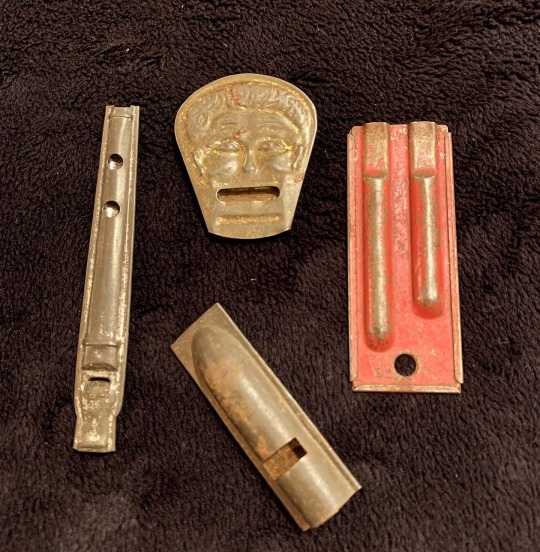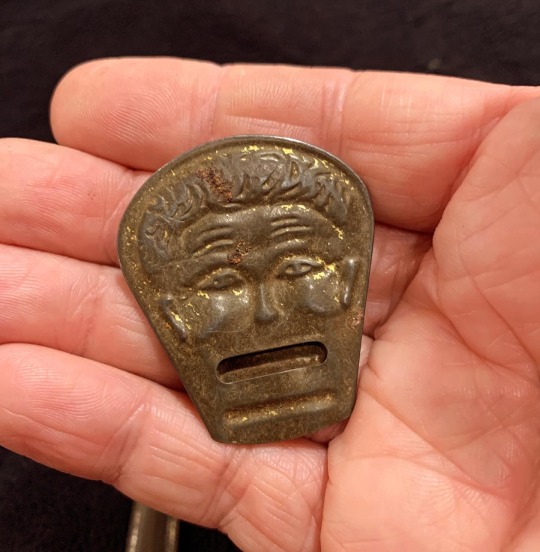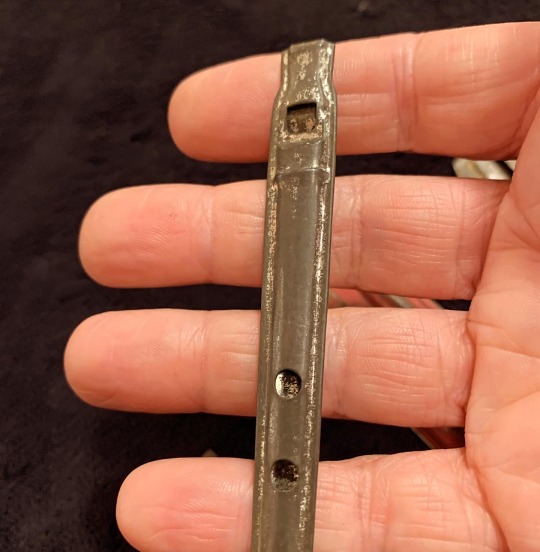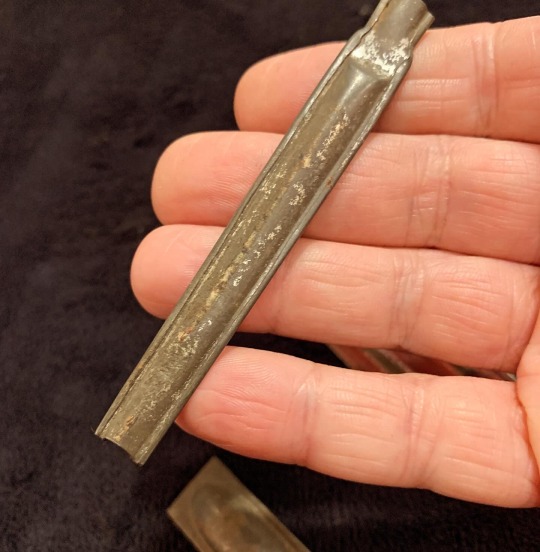#whistle blower
Explore tagged Tumblr posts
Text
⚠️ Rockefeller insider gives a rare glimpse of the real reasons for the feminist movement
"One reason was we couldn't tax half the population before Women's Lib. And the second reason was, now we get the kids in school at an early age, we can indoctrinate the kids how to think." 🤔
#pay attention#educate yourselves#educate yourself#knowledge is power#reeducate yourself#reeducate yourselves#think about it#think for yourselves#think for yourself#do your homework#do some research#do your own research#ask yourself questions#question everything#rockefeller foundation#news#whistle blower#you decide
284 notes
·
View notes
Text


#JoshHawley says due to the second attempt on Trump’s life, he is releasing the “comprehensive Whistleblower Report” on the #assassination attempt in Butler, PA
As always, never buy anything made in china. Don't ever trust a democrat and NEVER leave your child alone with one.
#trump 2024#joe biden#jd vance#kamala harris#tim walz#tampon tim#trump assassination attempt#assassination#josh hawley#whistle blower#butler pa#thomas cook#ryan routh#shooter
105 notes
·
View notes
Text
I need more outlast trials besties to play with

Reply in the post pleaaaseee.none of my other friends like horror let alone outlast
Ive played all the games and dlc.
I know the lore quite abit and love talking about the designs of characters and maps
And i wanna eventually make art starring some of my favorite enemies
#outlast trials#outlast#video games#artist#horror#spooky month#spooky#mother gooseberry#leland coyle#franco barbi#asdfghjkl#important#fav#trials#whistle blower#red barrels
66 notes
·
View notes
Text


Josh Hawley says due to the second attempt on Trump’s life, he is releasing the “comprehensive Whistleblower Report” on the assassination attempt in Butler, PA
As always, never buy anything made in china. Don't ever trust a democrat and NEVER leave your child alone with one.
#trump 2024#joe biden#kamala harris#jd vance#tim walz#tampon tim#josh hawley#thomas cook#ryan routh#trump assassination attempt#assassination#shooter#butler pa#golf course#whistle blower
65 notes
·
View notes
Text
Corruption
#politics#donald trump#insider trading#republicans#china#tarrifs#trump is a threat to democracy#trump is a felon#elongated muskrat#jd vance#fuck the gop#gop#criminal behavior#corruption#government corruption#whistle blower
27 notes
·
View notes
Text








AMERICANA HOBO WHISTLES
A collection of Americana , vintage metal whistles , each with a uniquely awesome sound. I purchased these from a gentleman that was passing by New Orleans , he said was traveling the country for free a top of railroad cargo cars , what a life !!! Item No. E5753 List Price: $ 125 for the collection. Ships Worldwide
504.581.3733 / t
#collectibles#americana#hobo life#hobo#whistles#antique whistle#whistle blower#patina#folk art#nola#magazine street#oddities#new orleans#antiques#new orleans antiques
111 notes
·
View notes
Text
Immortal Eddie Gluskin x Reader: All For You
(Part One. Might Continue)
Where and how to begin? He adored you, the moment he first saw you. After escaping from the asylum, he made sure to keep his head low and not stay in one place for too long. But that changed when he saw you, and your dull eyes.
You looked so bored of everything, so uninterested. And yet, Eddie knew instantly there was something more to you. He couldn't stop himself from following you, trying to figure out what it is about you that made him find you interesting.
But perhaps he was too interested. His tongue felt heavy, mouth dry. Brain stuffed with cotton and cobwebs. No, no, no, no! His eyes snap open wide, sitting up on the hospital bed expecting to find himself trapped back in that damned facility.
But there weren't any tubes down his throat, he didn't see 'the walrider', no strange voices or visions...hallucinations. The room he was in was dark, cold. Goosebumps form over his arms and legs. Squinting in the darkness, he could feel someone watching him.
It's when his eyes finally adjust to the darkness when he notices you. Standing in the corner of the room, the outline of your features, your eyes... Oh how the way you looked at him, examining him.
"You're awake..."
Walking out from the dark corner, you push a tray with scaples, filled syringes, and other medical tools. Eddie's eyes following your every move, his mouth slightly agape in awe as he took you in. Not paying attention as you listed off his vitals, and other things. He will praise the ground you walk on, never let your feet touch the filthy ground again if you so command him to.
Just keep your eyes on him, no one else. You are the one he's been looking for, his love. His wife, the mother to his children, his darling. Oh so precious darling that could do no wrong. Just don't be a whore, please don't be like those other whores, and he will be yours.
"Darling."
He breathes, his body trembling on the hospital bed, not from the cold but from excitement. And when you stop talking to glare at him, by the damnation of the Walrider, he could finish right then and there.
"Patient seems overwhelmed by something. Heart rate is tachycardia, BP is climbing...Giving beta blockers to slow his heart to normal rhythm, now."
You state with a sigh, wanting to get started sooner than later. But these things happen, at least this lab rat wasn't fighting back for now. Grabbing one of the filled syringes, you firmly grasp Eddie's arm. His eyes widening, body growing rigid as he remembers how he was forcibly pinned down, given injections and tests he didn't consent to. How he begged to be helped, to be saved from that hell.
He pulls away, feeling violently sick to his stomach and cold. Sweat beading across his forehead. You stare at him, placing the syringe down before taking hold of his hand as his breathing becomes ragged. The other rubbing soothing circles into his skin.
"Breathe, it's okay. You're safe here."
As safe as one could be with a Doctor slash Scientist who tests on humans rather than rats or animals. Eddie squeezes your hand, and with a blank expression, you squeezed his back. This was common with your test subjects, at first you never cared if they were terrified or furious, spatting curses.
But you came to realize, you get more flies with honey than with vinegar. Comfort them, and they will trust you more. Seems like you'd have to gain Eddie's trust before you can move forward.
"Rest..."
You say, pulling your gloved hand free as Eddie nodded, yet his blue eyes follow you as you leave, stopping to turn on a small lantern giving the room a soft yellow glow. Eddie lays back down on the hospital bed, pulling the thin sheet up to his chest.
He feels as if he's embarrassed himself in front of you, he wasn't being a man at all. Nightmares and trauma plagues him. And yet, you comforted him. He turns on his side, placing the hand that you held to his lips, feeling your lingering warmth. It calms him, eases him. He drifts off into a dreamless sleep...
24 notes
·
View notes
Text
I finished The Fowl Twins Get What They Deserve yesterday and I’d just like to talk about how Artemis and Whistle Blower did the same thing-but whistle blower did it faster, and Myles did not credit Artemis. Like…revival by clone was Artemis’s idea, Myles. You may hate him, but at least give him that.
#myles fowl#the fowl twins#artemis fowl ii#artemis fowl#Revival by clone#whistle blower#please someone get Myles a damn reality check
7 notes
·
View notes
Text
Former military doctor states chem trails contain barium salts, human plasma, microviruses, non-terrestrial nano-silicon machines, poisonous aerosols, and can even be used to augment ‘biocoding’ frequency-transmission capabilities, to provide an assistive-basis for “thought-based DNA warfare”.
⏬️⏬️⏬️
▶️▶️▶️@HATSTRUTH 🎩◀️◀️◀️
#chemtrails#weather predictions#weather control#weather modification#hurricanes#floods#tornadoes#bill gates#whistle blower#revealing truth#crimes against humanity#these people are evil#speaktruth#fight for justice#standup#speak up#truth#please share#wwg1wga
36 notes
·
View notes
Text
My thoughts on the Jake Barber documentary.
Just watched the newsnaton ufo documentary and it was interesting. The egg ufo was clear and beautiful. How he described what he felt and talk about the psychic team. Showing us that the government is still doing things with psychic research! I hope the skywatchers push the government and are safe.
#Jake Barber#Uap#psychic#government#aliens#aliencore#alien core#nhl#UFOs#ufodisclosure#whistle blower
2 notes
·
View notes
Text

Former spy Philip Giraldi shares how, after decades of serving in the intelligence community, he began to uncover the layers of deception within the agency, ultimately leading him to see through its lies and manipulations.
Read More: https://thefreethoughtproject.com/deep-state/how-i-got-fired-from-the-cia-career-ops-officer-tells-all
#TheFreeThoughtProject
#the free thought project#tftp#police state#CIA#philip giraldi#whistle blower#intelligence community#agency#central intelligence agency
2 notes
·
View notes
Text

2 notes
·
View notes
Text
The democrats protect certain whistleblowers and arrest others that expose their dirty deeds.
As always, never buy anything made in china. Don't ever trust a democrat and NEVER leave your child alone with one.
#trump 2024#joe biden#nwo#wef#whistle blower#transgender#child abuse#genital mutilation#satanic worship#trans surgery#george orwell
12 notes
·
View notes
Text
Leave it to folk singers to spread truth

2 notes
·
View notes
Text
The democrats protect certain whistleblowers and arrest others that expose their dirty deeds.
#trump 2024#joe biden#whistle blower#transgender#child abuse#trans surgery#genital mutilation#satanic worship#democrat corruption
5 notes
·
View notes
Text
youtube
8 notes
·
View notes